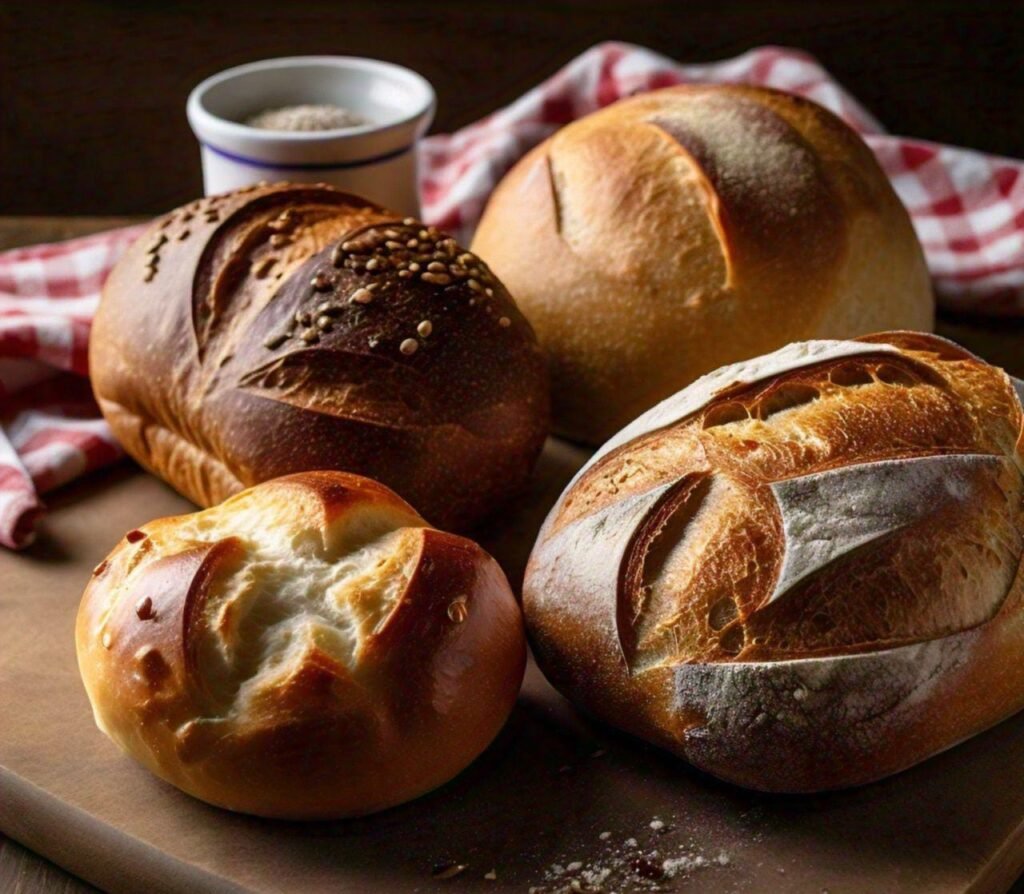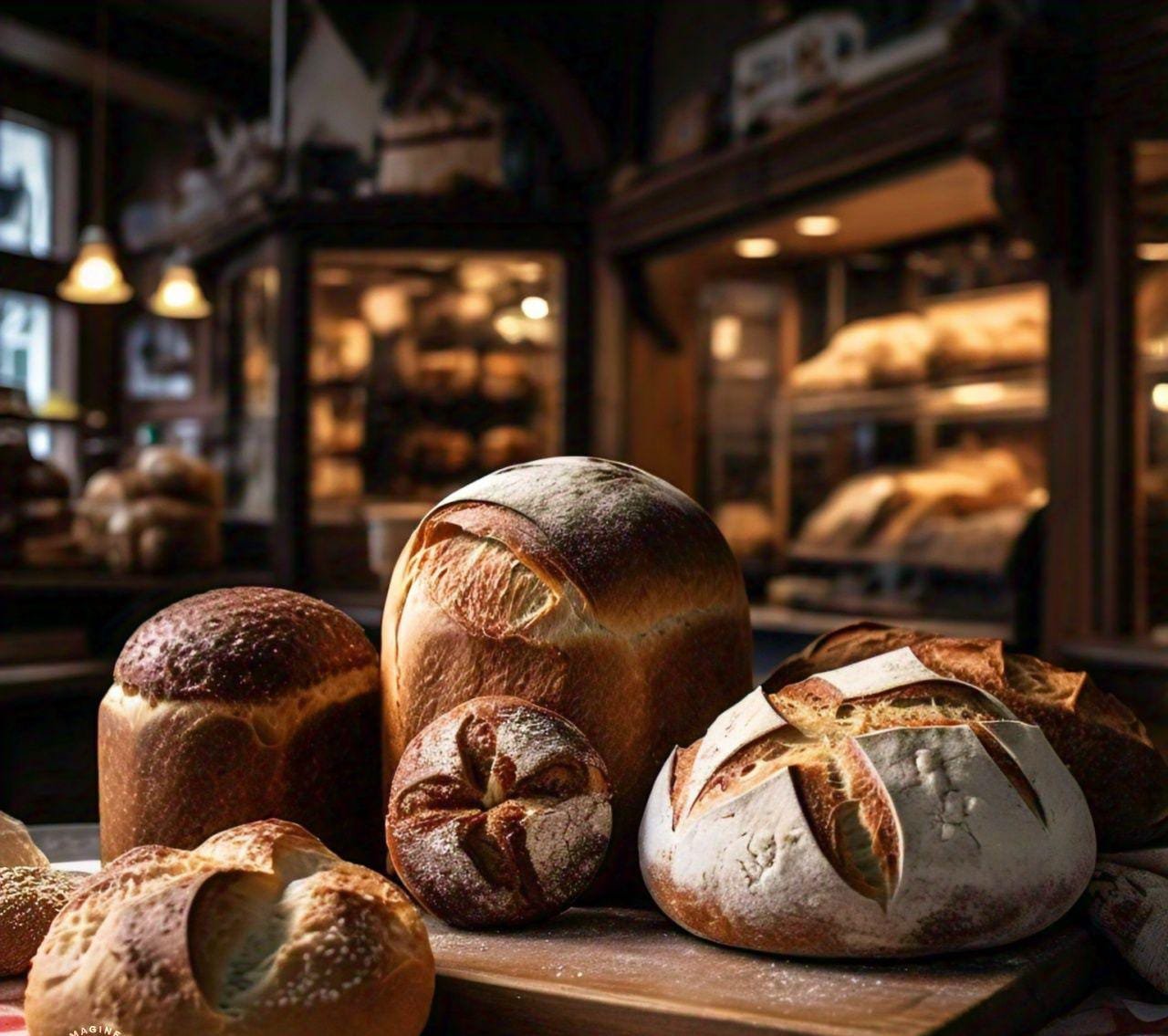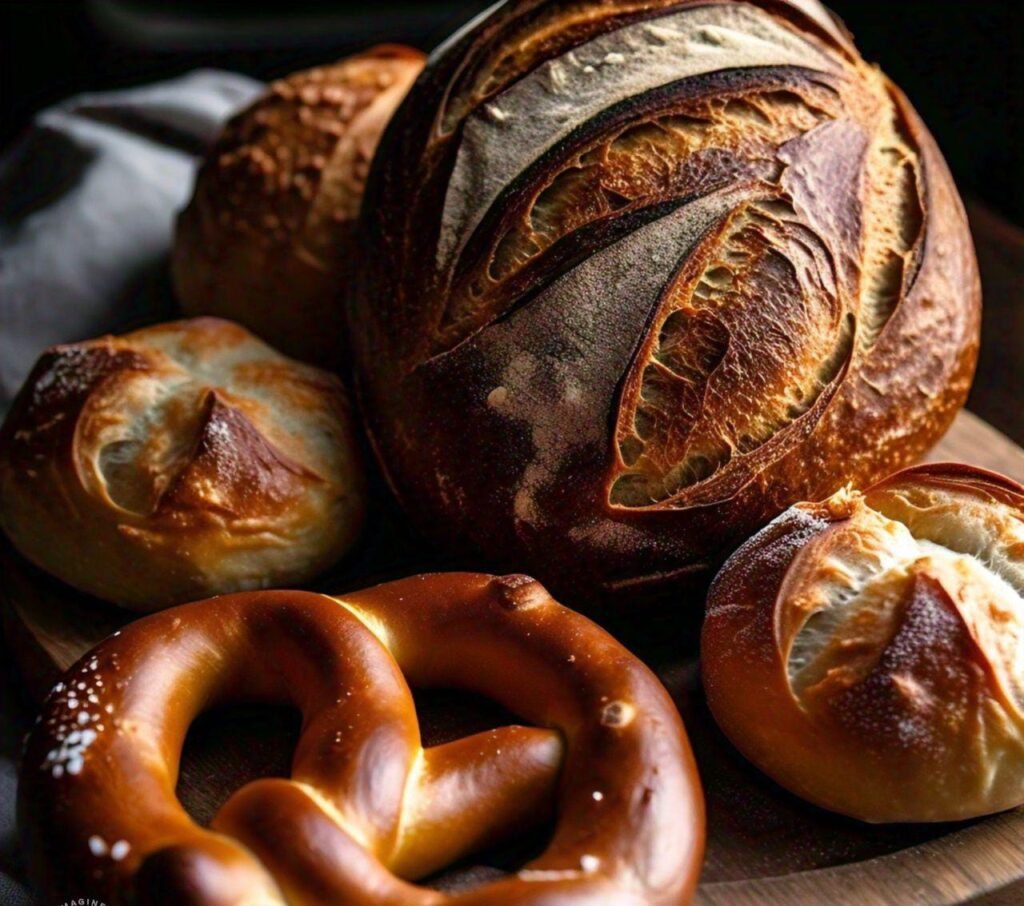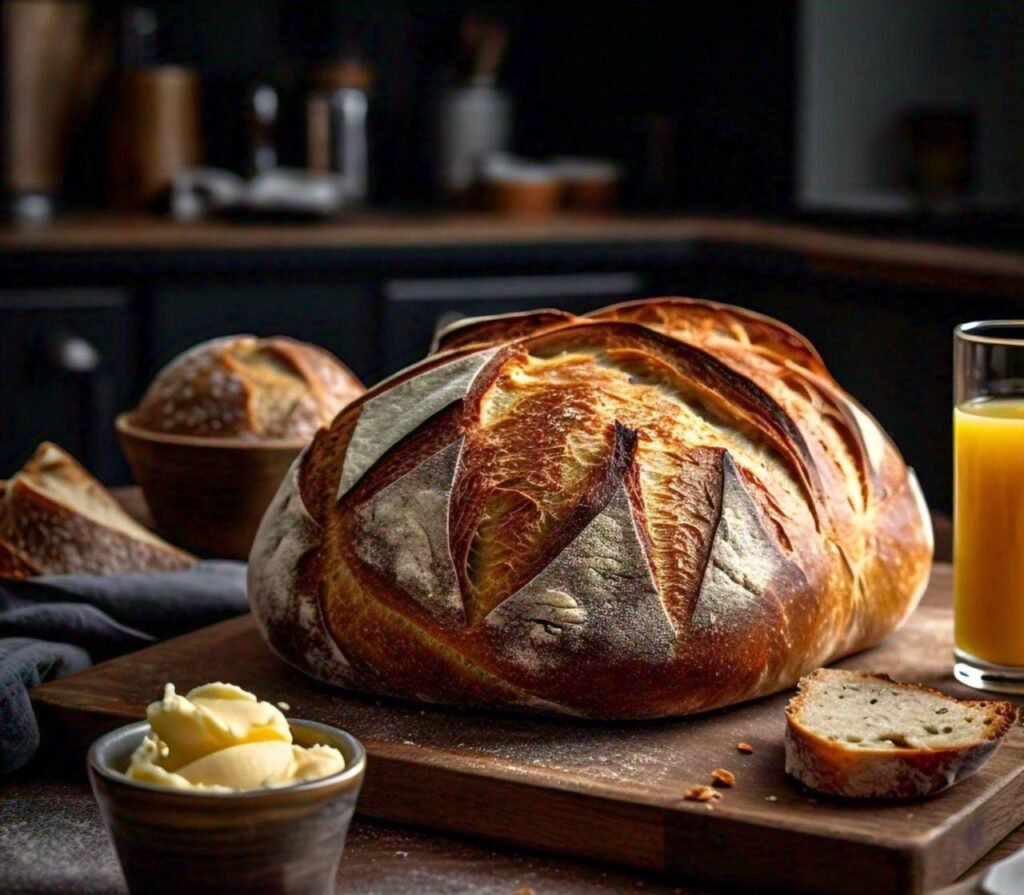Introduction to German Bread
The Rich Tradition of German Baking
Germany boasts a rich tradition of baking that dates back centuries. This tradition is deeply ingrained in the cultural and culinary fabric of the country, making bread one of the most cherished staples in German Bread cuisine. German Breadbakers are renowned for their meticulous craftsmanship, using age-old techniques passed down through generations to create a wide array of bread types. Each loaf tells a story of regional influences, historical events, and local ingredients, reflecting Germany’s diverse landscape and culture. From dense rye loaves to crusty sourdoughs, the variety of German bread is a testament to the nation’s dedication to baking.
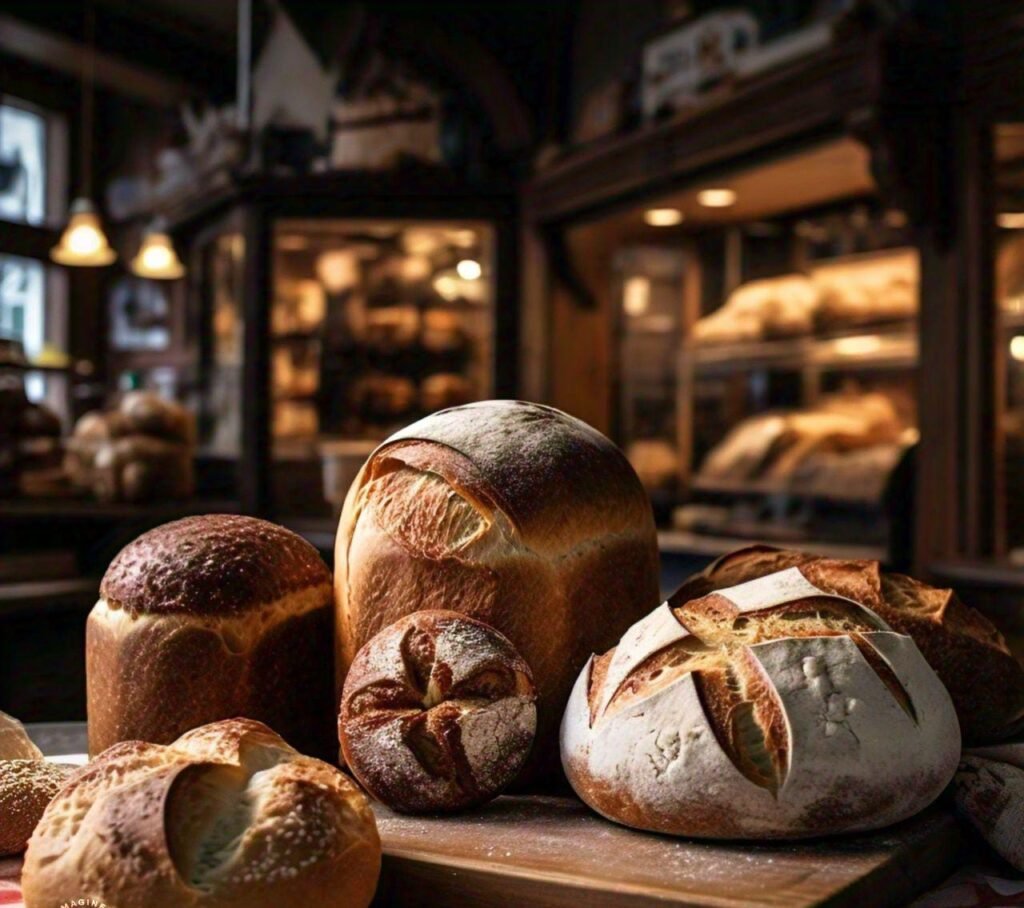
Bread as a Staple in German Bread Cuisine
In Germany, bread is more than just a side dish; it is a central component of daily meals and a symbol of hospitality and nourishment. Known as “Brot,” German bread comes in numerous forms, each serving a unique purpose in the culinary repertoire. Breakfast often includes a selection of fresh rolls (Brötchen) with butter, cheese, and cold cuts, while lunch and dinner might feature heartier loaves alongside soups, stews, and salads. The cultural significance of bread is evident in the term “Abendbrot,” which translates to “evening bread,” highlighting its role in the traditional German Bread evening meal.
Regional Variations of German Bread
Germany’s diverse regions contribute their unique twist to its bread culture, resulting in a rich tapestry of regional specialties. In the northern regions, darker, denser breads made from rye flour, such as Pumpernickel, are popular. These German breads are known for their long shelf life and robust flavors, often enjoyed with smoked fish and hearty spreads. Moving south, you’ll find lighter, airier breads like Pretzels and Weizenbrot (wheat bread), which pair perfectly with Bavarian sausages and beer. In the west, near the border with France, the influence of French baking is evident in the crusty, artisan-style bread. Meanwhile, eastern Germany is known for its rich tradition of sourdough bread, which has a distinct tangy flavor and chewy texture.
Introduction to German Bread
Origins of Bread Baking in Germany
The history of bread baking in Germany is a fascinating journey that stretches back thousands of years. Archaeological evidence suggests that the early Germans made bread as far back as the Neolithic era, using wild grains and rudimentary grinding tools. As agriculture developed, so did bread baking, with the cultivation of grains like rye and wheat becoming more sophisticated. By the Middle Ages, bread had become a staple in the German Bread diet, with each region developing its unique baking traditions. The establishment of bakeries and guilds in medieval towns and cities formalized bread making, ensuring that techniques and recipes were preserved and passed down through generations.
Evolution Through the Centuries
Throughout the centuries, German bread baking evolved due to various social, economic, and environmental factors. Introducing new ingredients from trade routes and the influence of neighboring countries enriched the variety of breads produced in Germany. The Industrial Revolution brought significant changes, with advancements in milling technology and transportation enabling the production of more refined flour and the widespread distribution of bread. Despite these changes, traditional methods and recipes remained cherished, particularly in rural areas where families continued to bake bread using ancient techniques. The 20th century saw further diversification, with the influence of international cuisines and the health food movement inspiring bakers to experiment with whole grains, seeds, and alternative flours.
Influence of Historical Events on Bread Types
Historical events have left an indelible mark on the types of bread found in Germany today. For instance, during times of scarcity, such as the World Wars, bakers had to adapt by using available ingredients, creating breads like Kriegsbrot (“war bread”), which were made with a mixture of grains and even sawdust. Post-war reconstruction periods saw a return to traditional recipes and the revival of regional specialties. The reunification of Germany in 1990 brought together diverse bread traditions from East and West, enriching the country’s bread culture even further. Today, German bread is celebrated worldwide for its variety and quality, with traditional bakeries and modern artisan bakers alike continuing to honor the rich heritage of German baking.
Types of German Bread
Rye Bread (Roggenbrot)
Rye bread, or Roggenbrot, is a quintessential staple in German baking. Known for its dark color, dense texture, and robust flavor, rye bread is made primarily from rye flour, which gives it a unique taste and high nutritional value. Rye flour is rich in fiber, vitamins, and minerals, making Roggenbrot a healthy choice. The bread is often slightly sour due to the natural fermentation process involved in its preparation. Traditional Roggenbrot has a long shelf life, making it a practical option for households. It pairs well with various toppings, from savory cheeses and cold cuts to sweet spreads, making it versatile for any meal.
Sourdough Bread (Sauerteigbrot)
Sourdough bread, or Sauerteigbrot, is another cornerstone of German bread culture. This type of bread is made using a natural sourdough starter, which ferments the dough and gives the bread its characteristic tangy flavor and chewy texture. The sourdough starter is a mixture of flour and water that captures wild yeast and lactic acid bacteria from the environment. This natural fermentation process enhances the German bread’s flavor and improves its digestibility and nutritional profile. Sourdough bread in Germany comes in various forms, from the dense and hearty varieties found in the south to the lighter, crustier loaves popular in the north. Sauerteigbrot is celebrated for its depth of flavor, health benefits, and the artisanal skill required to produce it.
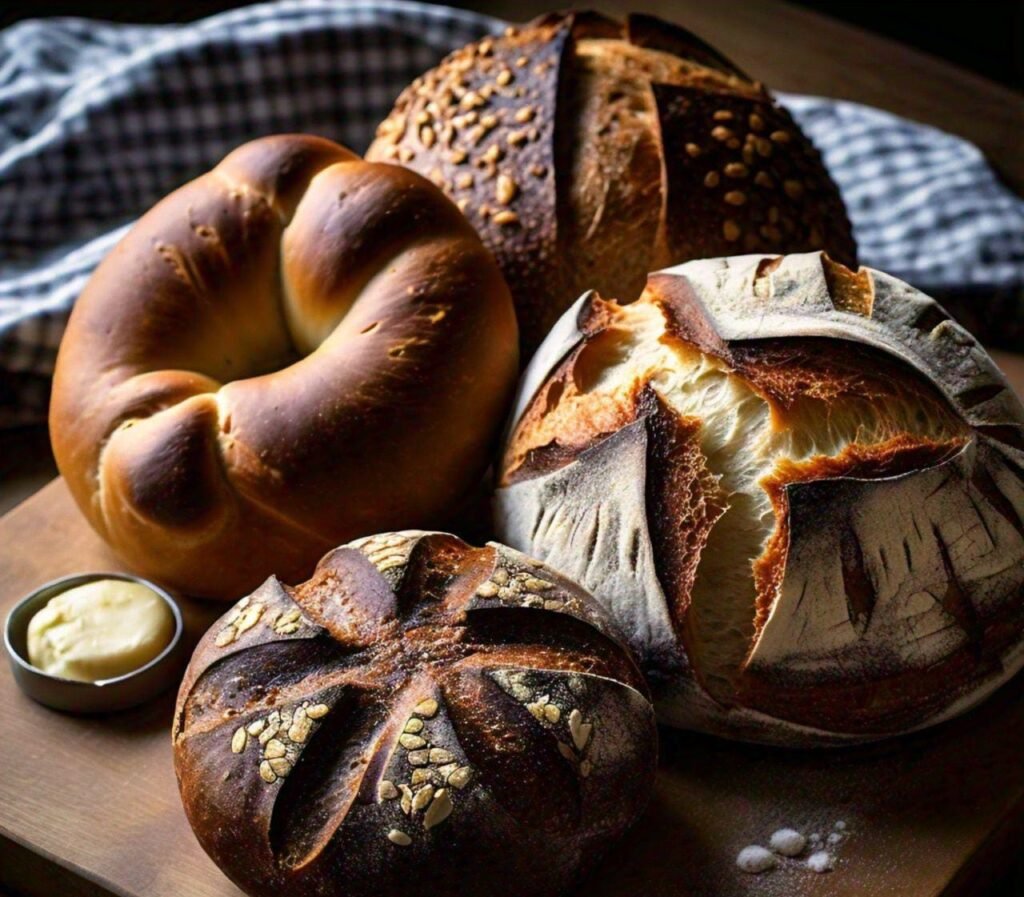
Whole Grain Bread (Vollkornbrot)
Whole grain bread, known as Vollkornbrot, is a staple in German Bread households, valued for its health benefits and hearty taste. Made from whole grains, including wheat, rye, spelled, or barley, Vollkornbrot is packed with fiber, vitamins, and minerals. Whole grains ensure that the German bread retains all parts of the grain kernel, including the bran, germ, and endosperm, providing maximum nutritional benefit. Vollkornbrot is typically dense and moist, with a slightly nutty flavor from whole grains. It is often baked in loaf form and sliced thinly for serving. This German bread is particularly popular among those who prioritize health and wellness, as it supports digestive health and provides sustained energy.
Popular German Bread Recipes
Pumpernickel
Pumpernickel is one of Germany’s most famous and distinctive German bread types, renowned for its deep, dark color and unique, slightly sweet flavor. Originating from the Westphalia region, traditional pumpernickel is made from coarsely ground rye flour and is baked slowly at a low temperature for up to 24 hours. This long baking process caramelizes the sugars in the rye, giving the German bread its characteristic dark color and rich taste. Pumpernickel has a dense, moist texture and is often sliced very thin due to its heaviness. It pairs exceptionally well with smoked fish, hearty cheeses, and savory spreads, making it a staple for open-faced sandwiches and hors d’oeuvres.
Pretzel Bread (Brezel)
Pretzel bread, or Brezel, is an iconic German Bread snack beloved worldwide for its distinctive shape, crunchy crust, and soft, chewy interior. Traditionally, pretzels are made from simple ingredients: flour, water, yeast, and salt. What sets pretzels apart is their preparation method. After the dough is shaped into the classic twisted form, it is briefly boiled in water and baking soda before baking. This step gives the pretzel its unique texture and characteristic brown, shiny crust. Pretzels are often sprinkled with coarse salt before baking, but variations can include toppings like seeds, cheese, or herbs. In Germany, pretzels are enjoyed at any time of day.
Bauernbrot (Farmer’s Bread)
Bauernbrot, or farmer’s bread, is a hearty, rustic loaf that embodies the essence of traditional German Bread country baking. This German bread is typically made from rye and wheat flour, sometimes with a sourdough starter, which imparts a mild tangy flavor and improves the bread’s quality. Bauernbrot has a thick, crunchy crust and a soft, dense crumb, perfect for robust sandwiches and hearty meals. Its flavor is rich and slightly sour, thanks to the fermentation process, and it often includes seeds such as caraway or sunflower for added texture and taste. This bread is a staple in many German households, cherished for its versatility and satisfying nature.
